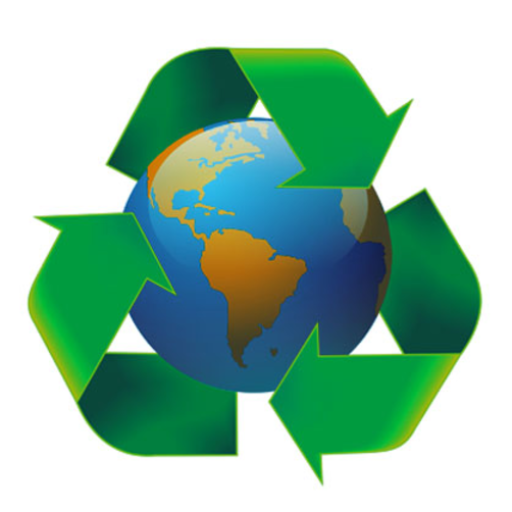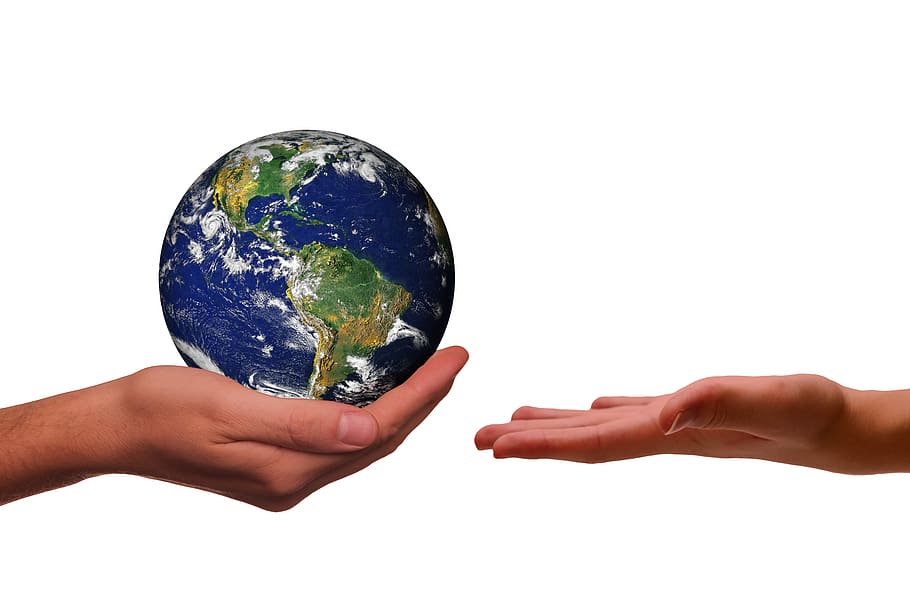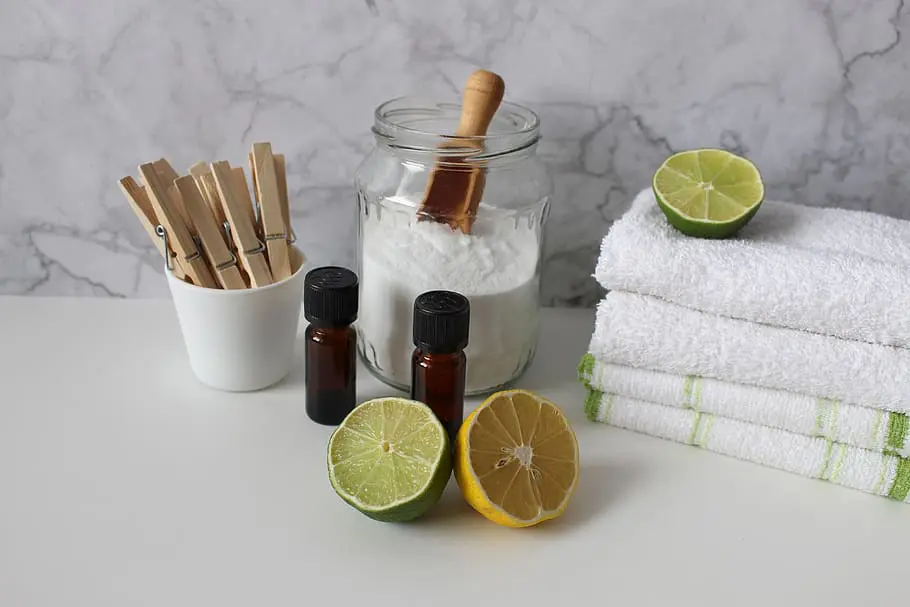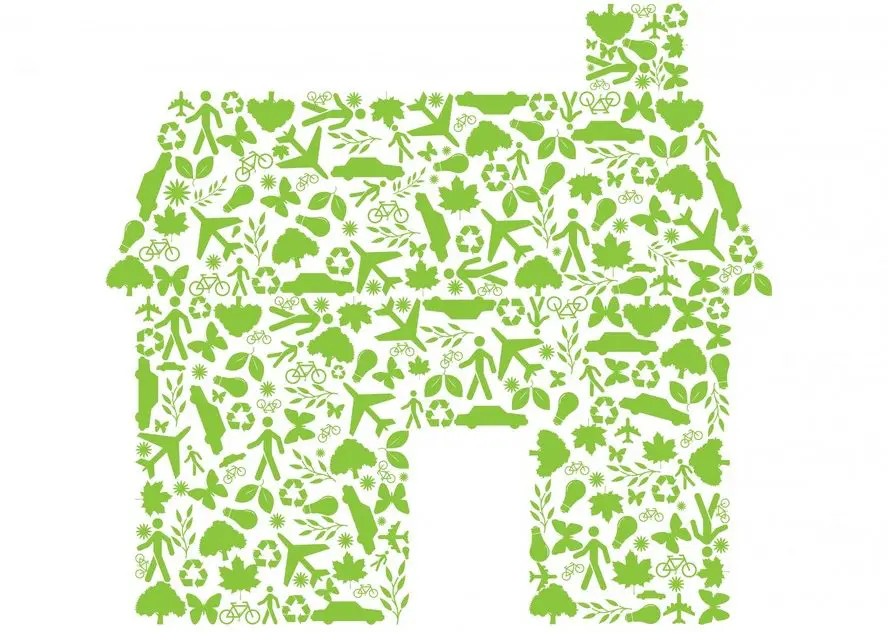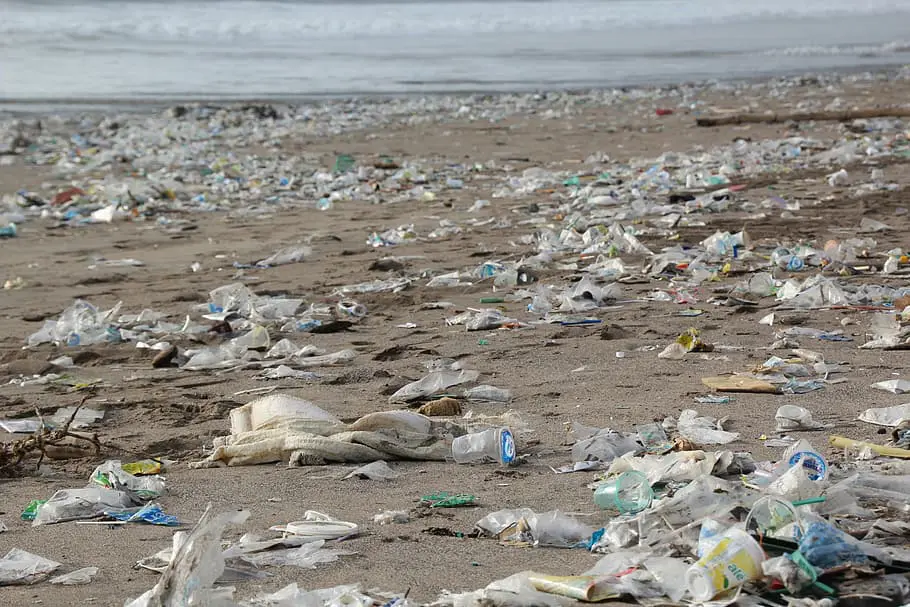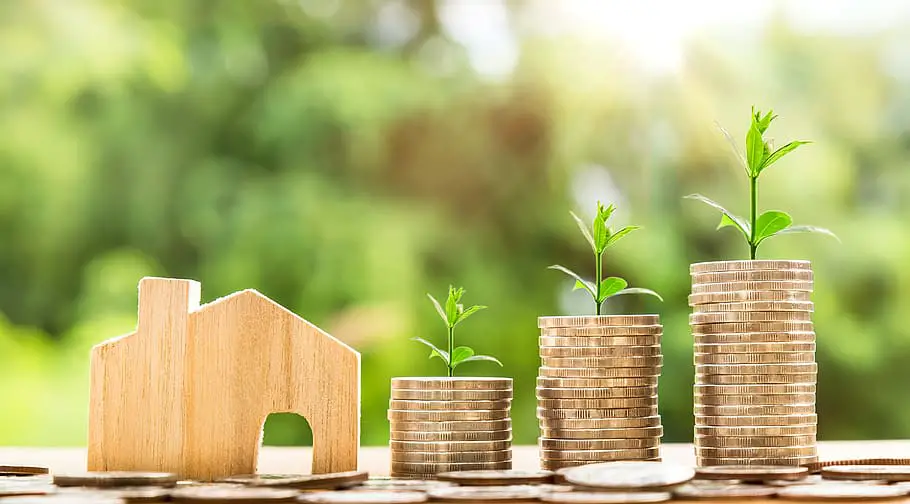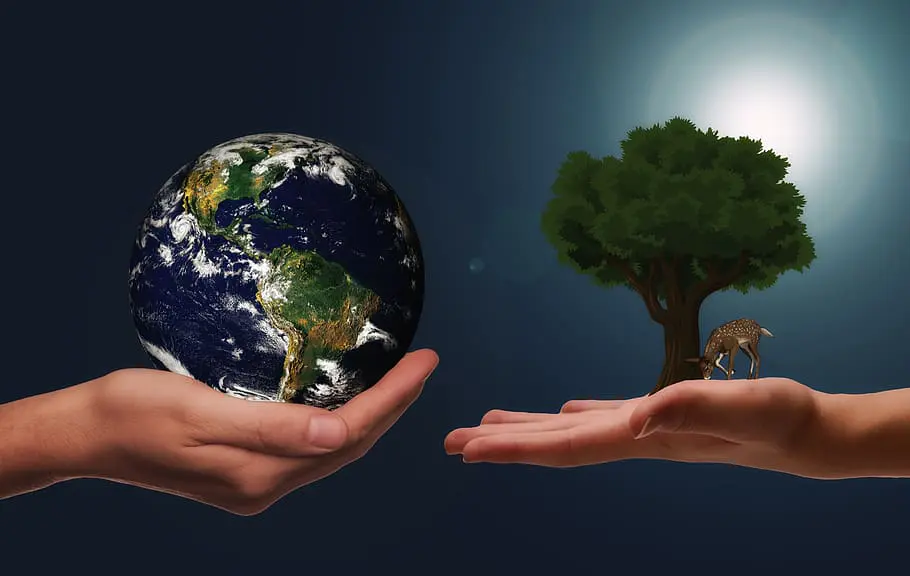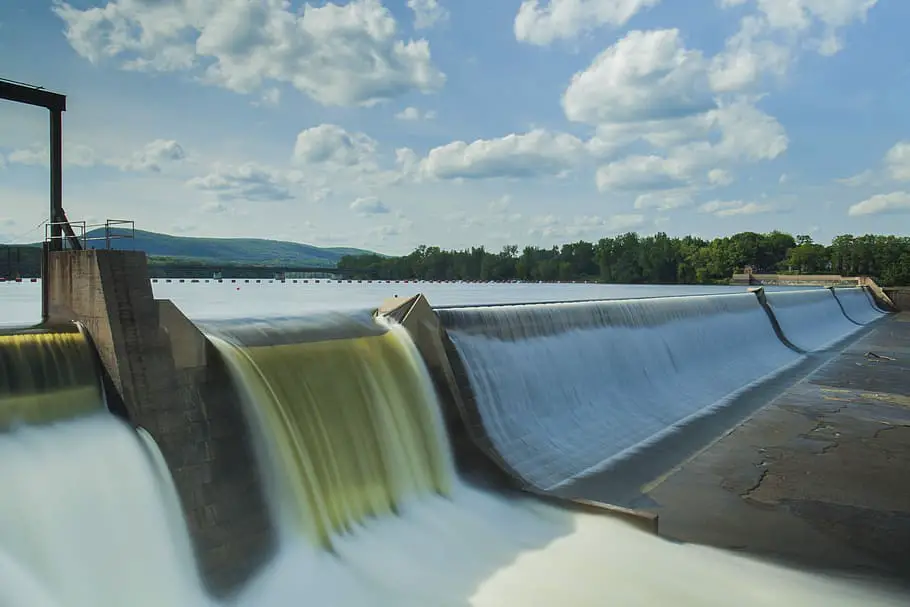
Discover practical and easy ways to conserve water in daily life. Make a difference for the environment and your wallet with our helpful guide!
Ever thought about how much water we use every day? From the morning shower to the evening dishes, water is a constant in our daily routines.
But as we face increasing environmental challenges, finding ways to conserve water in daily life has never been more important.
Not only can it help the planet, but it can also make a significant dent in your utility bills.
So, let’s dive in and explore some simple yet effective strategies to save this precious resource!
Ways to Conserve Water in Daily Life
Water, the lifeblood of our planet, is something we often take for granted.
But did you know that small changes in our daily routines can make a big difference in conserving this vital resource?
In this post, we’ll explore ways to conserve water in daily life, from the bathroom to the kitchen, and even in the garden.
We’ll also delve into why saving water is crucial for our environment, economy, and future generations.
Plus, we’ll answer some frequently asked questions about water conservation.
So, whether you’re a water-wise veteran or just starting your conservation journey, there’s something here for everyone. Let’s get started!
Importance of Water Conservation
Water is more than just a resource; it’s the lifeblood that sustains every living creature on our planet.
Yet, it’s easy to forget its value when we turn on a tap and it flows out effortlessly.
The reality is, fresh water is not as abundant as we might think. Only a tiny fraction of the Earth’s water is accessible and safe for us to use. As our population grows and climate patterns shift, this precious resource is under increasing pressure.
Conserving water is not just about saving money on our utility bills (although that’s a nice bonus!).
It’s about ensuring a sustainable future for our children and generations to come.
It’s about preserving our ecosystems, reducing the energy used to treat and transport water, and even combating climate change. In short, every drop counts!
Brief Overview of the Article
In this article, we’re going to take a deep dive into the world of water conservation.
We’ll explore practical and easy ways to conserve water in daily life in different areas of your home, from the bathroom to the kitchen, and even in your garden.
We’ll also discuss the impact of water conservation on businesses and answer some frequently asked questions about water conservation.
Whether you’re looking for tips to reduce your water usage or seeking to understand the broader implications of water conservation, this article has got you covered.
So, let’s embark on this journey together and discover how we can make a difference, one drop at a time!
Why Save Water?
Why save water? you might ask. After all, our planet is covered in it.
But here’s the thing – not all water is created equal. The fresh, clean water we need for our daily lives is actually a pretty limited resource.
And with growing populations and changing climates, it’s becoming even more precious.
In this section, we’ll delve into the reasons why saving water is so important.
We’ll look at the environmental impact, the economic benefits, and how conserving water is key to our sustainability and future generations.
So, let’s dive in and uncover the ‘why’ behind water conservation.
Environmental Reasons
When we think about water conservation, the first thing that often comes to mind is the environmental impact. And rightly so!
Freshwater ecosystems are incredibly delicate, and excessive water use can disrupt the balance, affecting wildlife and plant life.
Moreover, water treatment and transportation require energy, contributing to greenhouse gas emissions.
By conserving water, we reduce the energy demand and help combat climate change.
Plus, less water usage means less runoff and wastewater, reducing pollution in our lakes, rivers, and local watersheds.
Many parts of the Southwest are already experiencing a serious water shortage. So, every drop of water we save is a step towards a healthier planet.
The U.S. population has doubled over the past 50 years, while our thirst for water has tripled. With at least 40 states anticipating water shortages by 2024, the need to conserve water is critical.
Economic Reasons
Next up, let’s talk about the economic reasons for water conservation. It’s simple math, really, the less water you use, the lower your utility bills.
But the benefits extend beyond just our personal finances. Water treatment and distribution are costly processes for our municipalities.
By reducing our water demand, we can help save public money, leading to economic benefits for our communities.
Plus, businesses can also see significant cost savings by implementing water-efficient practices.
So, conserving water is a win-win for our wallets and our economy!
Sustainability and Future Generations
Last but certainly not least, we need to consider sustainability and future generations.
The truth is, we’re using water at a faster rate than it can be naturally replenished.
This overuse puts a strain on our water resources, threatening our long-term water security.
By conserving water now, we ensure that there’s enough to go around, not just for us, but for our children, grandchildren, and the generations to come.
After all, water is a shared resource, and it’s our responsibility to use it wisely. So, let’s make every drop count for a sustainable future!
Water Conservation in the Bathroom
When it comes to water conservation, the bathroom is a great place to start. Why, you ask?
Well, it’s where we use a significant amount of our household water – think showers, baths, flushing toilets, and running taps.
But don’t worry, making your bathroom more water-efficient doesn’t mean you’ll have to compromise on cleanliness or comfort.
In this section, we’ll explore some simple yet effective strategies for conserving water in the bathroom, from your showers and baths to toilets and faucets.
So, let’s roll up our sleeves and dive into the world of water-saving bathroom habits!
Showers and Baths
Let’s start with showers and baths, which are some of the biggest water users in our homes.
But don’t worry, you don’t have to sacrifice your relaxing bath or invigorating shower to save water.
Instead, consider installing a low-flow showerhead. These clever devices can significantly reduce the amount of water you use without compromising on pressure.
And remember, every minute less in the shower can save gallons of water.
As for baths, try to limit them to special occasions or consider filling the tub only halfway.
These small changes can make a big difference in your water usage.
Toilets
Next up, toilets. They might not be the most glamorous topic, but they’re a crucial part of our water conservation efforts.
Older toilet models can use a staggering amount of water per flush.
If you’re able, consider upgrading to a high-efficiency or dual-flush toilet.
These models use significantly less water per flush, leading to substantial water savings over time.
And here’s a simple tip: avoid using the toilet as a wastebasket.
Every time you flush a tissue or other small piece of trash, you’re wasting gallons of water.
Taps and Faucets
Finally, let’s talk about taps and faucets. A running tap can waste several liters of water per minute.
So, make sure to turn off the tap while you’re brushing your teeth or shaving.
And if you notice a leaky faucet, get it fixed as soon as possible. Even a small drip can add up to a lot of wasted water over time.
You might also want to consider installing faucet aerators. These devices mix air with the water flow, reducing the amount of water that’s used while maintaining pressure.
Remember, every drop counts when it comes to water conservation!
Water Conservation in the Kitchen
Now, let’s move on to the heart of the home – the kitchen.
From cooking and cleaning to washing dishes, we use a lot of water in our kitchens.
But with a few simple changes, we can turn our kitchens into a hub of water conservation.
In this section, we’ll explore practical ways to save water while dishwashing and cooking.
So, whether you’re a seasoned chef or a microwave maestro, there’s something for everyone.
Let’s get cooking and see how we can make our kitchens more water-efficient!
Dishwashing
Dishwashing, whether by hand or machine, is a major water activity in the kitchen.
If you’re washing dishes by hand, avoid leaving the tap running continuously.
Fill one sink or basin with soapy water for washing and another with clean water for rinsing.
If you’re using a dishwasher, always wait until you have a full load before running it.
Modern dishwashers are designed to be water-efficient and often use less water than washing dishes by hand.
Also, consider scraping instead of pre-rinsing dishes before loading them into the dishwasher.
You’ll be surprised how much water this can save!
Cooking and Drinking
When it comes to cooking, there are plenty of opportunities to conserve water.
For instance, use just enough water to cover your vegetables or pasta when boiling.
Not only will this save water, but it’ll also preserve the nutrients in your food.
If you have leftover water from steamed or boiled food, let it cool and use it to water your plants.
As for drinking water, keep a jug in the fridge so you don’t have to run the tap until it’s cold.
And remember, don’t pour leftover water down the drain. Use it to water your plants or rinse your dishes.
Every drop counts when it comes to water conservation!
Water Conservation in the Garden
Let’s step outside for a moment and talk about water conservation in the garden.
Whether you have a sprawling backyard or a small balcony garden, there are plenty of ways to save water.
And the best part? A water-efficient garden often means less work for you!
In this section, we’ll explore how to care for your lawn and plants in a way that conserves water.
So, grab your gardening gloves, and let’s dig into some water-saving gardening tips!
Lawn Care
A lush, green lawn is a sight to behold, but it can be a real water guzzler.
However, with a few smart practices, you can maintain a healthy lawn while conserving water.
First, water your lawn early in the morning or late in the evening when temperatures are cooler.
This reduces evaporation and ensures more water reaches the roots.
Second, don’t overwater. Lawns only need about an inch of water per week, including rainfall.
And remember, a slightly brown lawn in the summer is okay. It will bounce back when the cooler weather returns.
Lastly, consider low-mow or no-mow grass species that require less water and maintenance.
Plant Care and Irrigation
When it comes to plant care and irrigation, a little planning goes a long way.
Group plants with similar water need together to avoid overwatering or underwatering.
Use mulch around your plants to reduce evaporation and keep the soil cool.
When it comes to watering, consider installing a drip irrigation system.
These systems deliver water directly to the base of the plant, reducing water waste.
And if you’re planting new plants, opt for native or drought-tolerant species.
They’re adapted to local conditions and typically require less water.
Remember, a water-wise garden is not only good for the environment but also easier on your back and your wallet!
Using and Storing Rainwater
One of the most effective ways to conserve water in your garden is to harness the power of Mother Nature herself.
Collecting and storing rainwater is a fantastic way to reduce your reliance on tap water.
Rainwater is naturally soft and free of chlorine, lime, and other chemicals found in tap water, making it great for plants.
To start collecting rainwater, consider installing a rain barrel or a more extensive rainwater harvesting system.
These systems collect water from your roof’s downspouts and store it for later use.
You can then use this water for watering your plants, washing your car, or even flushing your toilets.
Remember to cover your rain barrels to prevent mosquitoes and other pests from breeding.
Also, in some areas, collecting rainwater may be subject to local regulations, so it’s a good idea to check these before you start.
By using rainwater, you’re not only saving on your water bill but also making the most of a natural resource that would otherwise go to waste.
Now that’s smart gardening!
Water Conservation in Daily Habits
Now that we’ve covered specific areas of the home and garden, let’s zoom out a bit and look at our daily habits.
You see, water conservation isn’t just about installing low-flow showerheads or collecting rainwater.
It’s also about the small decisions we make throughout the day.
In this section, we’ll explore how simple changes to our daily habits, like our laundry practices and how we reuse water, can add up to significant water savings.
So, let’s dive in and discover how we can weave water conservation into the fabric of our everyday lives!
Laundry Practices
Laundry is a part of life, but it doesn’t have to be a drain on our water resources.
One of the easiest ways to save water is to wait until you have a full load before running your washing machine.
Full loads use the same amount of water as small loads, so you’ll get more cleaning done for the same amount of water in your clothes washer.
If you need to wash a small load, be sure to adjust the water level on your machine accordingly.
And if you’re in the market for a new washing machine, consider a high-efficiency model.
These machines use significantly less water and energy than traditional models.
Reusing Water
Reusing water, or ‘greywater’, is another excellent way to conserve water.
Greywater is wastewater from non-toilet plumbing systems such as showers, baths, and washing machines.
You can reuse this water for things like flushing toilets or watering plants.
For example, you could collect the runoff from your shower in a bucket and use it to water your garden.
Or use the rinse water from your laundry to flush your toilet.
Just be sure to use eco-friendly, plant-safe detergents if you’re planning to use your greywater in the garden.
Remember, every drop of water we save is a step towards a more sustainable future!
The Impact of Water Conservation on Businesses
Water conservation isn’t just a concern for households; it’s also a crucial consideration for businesses.
From manufacturing processes to office facilities, water plays a vital role in many aspects of business operations.
But with increasing environmental concerns and rising utility costs, water conservation is becoming more than just an ethical responsibility.
It’s a smart business strategy.
In this section, we’ll delve into how water conservation can impact businesses, from cost savings to improved brand image.
So, whether you’re a business owner, manager, or just interested in the intersection of business and sustainability, this section is for you. Let’s dive in!
Cost Savings and Efficiency
Water conservation can lead to significant cost savings for businesses.
By implementing water-efficient practices and technologies, businesses can reduce their water usage and, consequently, their water bills.
Additionally, water conservation can lead to increased efficiency, as businesses identify and eliminate wasteful practices.
Regulatory Compliance
As water scarcity becomes a more pressing issue, regulations around water use and water consumption are becoming stricter.
Your water meter can help you keep track of water usage.
By prioritizing water conservation, businesses can ensure they stay ahead of regulatory changes and avoid potential fines or sanctions.
Enhanced Brand Image
In today’s environmentally-conscious market, consumers are increasingly looking to support businesses that prioritize sustainability.
By demonstrating a commitment to water conservation, businesses can enhance their brand image, attract new customers, and foster loyalty among existing ones.
Risk Management
Water scarcity can pose significant operational risks for businesses, particularly those in water-intensive industries.
By implementing water conservation measures, businesses can mitigate these risks and ensure the sustainability of their operations.
Ways to Conserve Water in Daily Life FAQs
We’ve covered a lot of ground on our water conservation journey, and you may still have some questions. That’s great!
Asking questions is a crucial part of learning and making informed decisions.
In this section, we’ll tackle some of the most frequently asked questions about water conservation.
From the best ways to conserve water to how we can incorporate water-saving practices into our daily lives, we’ve got you covered.
So, let’s dive into these questions and quench our thirst for knowledge!
Q: What are 10 ways to conserve water?
A: There are many ways to conserve water, but here are 10 easy ways to conserve water in daily life that you can start with today:
• Install low-flow showerheads and faucet aerators.
• Wait for full loads before running your dishwasher or washing machine.
• Fix leaky faucets and toilets promptly.
• Water your garden early in the morning or late in the evening to reduce evaporation.
• Use a rain barrel to collect rainwater for watering plants.
• Turn off the tap while brushing your teeth or shaving.
• Install a dual-flush toilet.
• Use a broom instead of a hose to clean driveways or sidewalks.
• Only fill your bathtub halfway when taking a bath.
• Reuse greywater for watering plants or flushing toilets.
Q: How can we conserve water in daily use?
A: Conserving water in daily use is all about making mindful choices.
Turn off the tap while brushing your teeth, take shorter showers, and only run your dishwasher or washing machine with full loads.
Also, consider reusing water whenever possible. For example, you can collect the water used to rinse fruits and vegetables and use it to water your plants.
Q: How do humans conserve and waste water in our daily lives?
A: Humans can conserve water in many ways, such as using water-efficient appliances, fixing leaks promptly, and being mindful of our water use in daily activities like showering, cooking, and cleaning.
However, we also waste a lot of water, often without realizing it. Leaving the tap running while brushing our teeth, overwatering our lawns, and washing only a few items in a dishwasher or washing machine are all ways we waste water in our daily lives.
By being more mindful of our water use and making a few simple changes, we can significantly reduce water waste.
Ways to Conserve Water in Daily Life – Final Thoughts
We’ve journeyed through the world of water conservation, from our bathrooms to our gardens, and even touched on its impact on businesses.
But as we reach the end of this guide, it’s important to remember that our journey toward water conservation doesn’t end here.
In fact, it’s just beginning! In this concluding section, we’ll recap the key points we’ve covered and leave you with some final thoughts to inspire you to continue your water-saving efforts.
So, let’s wrap things up and reflect on how we can make every drop count in our daily lives!
Recap of Key Points
We’ve covered a lot of ground in this guide. We started by understanding the importance of water conservation, not just for the environment, but also for our economy and future generations.
We then explored practical ways to conserve water in our homes, from installing low-flow showerheads in our bathrooms to waiting for full loads before running our dishwashers.
We also discussed how we can save water in our gardens, from smart lawn care practices to using and storing rainwater.
And let’s not forget the impact of water conservation on businesses, from cost savings to enhanced brand image.
Encouragement for Readers to Implement Water Conservation Practices
Now, it’s over to you! Remember, every drop counts when it comes to water conservation.
And the great news is, every small change can make a big difference.
So, whether you start by turning off the tap while brushing your teeth or decide to install a rain barrel in your garden, your actions matter.
Not only will you be helping to conserve a precious resource, but you’ll also be contributing to a more sustainable future.
So, let’s make every drop count and start our water-saving journey today!
Read More: How To Start A Zero Waste Lifestyle: 9 Easy Steps
